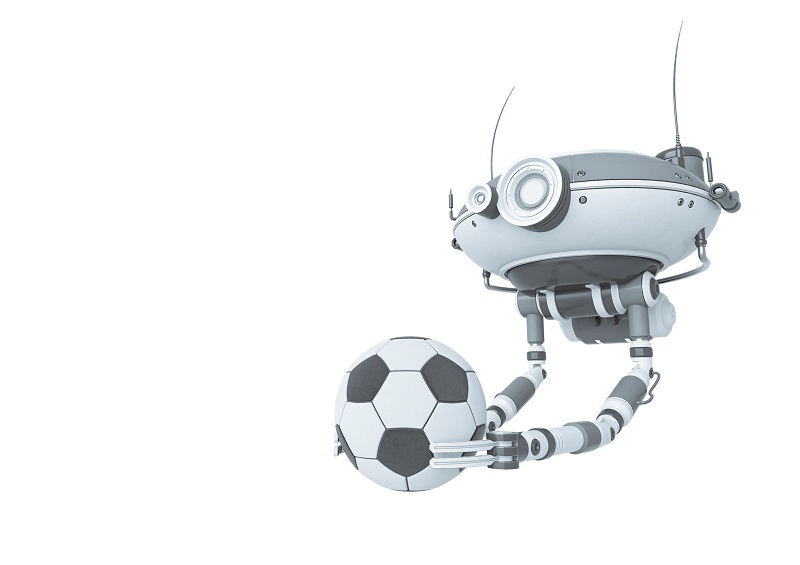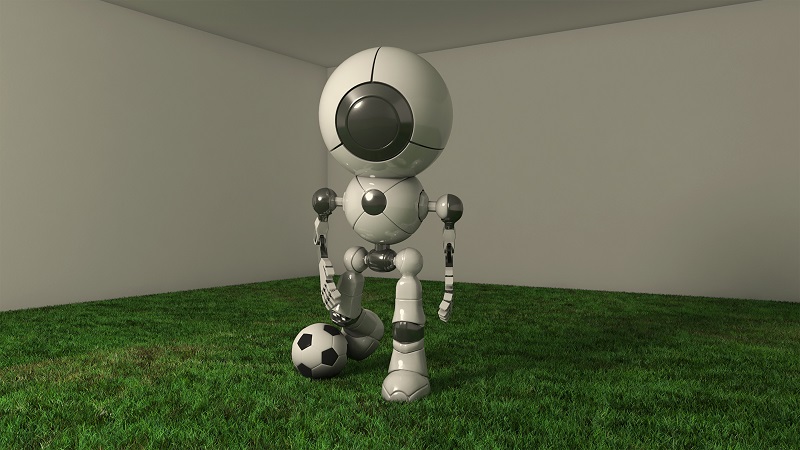Mini Cheetah, a 9-kilogram, four-legged robot, outperforms even the top goalkeepers in the English Premier League, who have an impressive save percentage of nearly 80 percent. With an extraordinary 87.5 percent success rate, Mini Cheetah is an exceptional robot. This blog explores the enthralling tale of Mini Cheetah’s goalkeeping abilities, highlighting the cutting-edge technology and inventive techniques that allow this tiny robot to compete with even the most skilled human goalkeepers.
An Overview of Developing Goalkeeping Skills in Mini Cheetahs
Training Mini Cheetahs as a goalkeeper involves an organized strategy that combines manual programming with simulation-based instruction. The focus of the study is on three essential abilities:
- Sidestepping
- Diving
- Springing
Mini Cheetah improves its sidestepping technique by way of iterative simulations and manual programming. The robot can cover a larger area and intercept projectiles close to the ground by sidestepping. The automaton can reach the goal’s lower corners by diving. Through the manual programming of a reference motion and simulation-based training, the bot learns the required timing and trajectory for successful dives.
Mini Cheetah will be able to achieve goals by leaping or springing and hitting the ball right on the top and the upper corners. Through simulation-based training, the researchers optimize the robot’s technique by programming a reference motion for leaping. The robot chooses the most appropriate talent based on the trajectory of the ball and its capabilities. Simulation-based training is crucial, enabling Mini Cheetah to acquire knowledge and develop in virtually simulated environments.
From Simulation to Success: Mini Cheetah’s Goalkeeping Breakthrough
Mini Cheetah’s exceptional goalkeeping skills are a result of its mastery of the complex challenges of object manipulation and dynamic locomotion. Unlike static duties, goalkeeping on turf football Chennai (https://www.dugoutchennai.com/) demands the robot to react quickly to the unpredictability of the ball’s rapid movement. Let us first discuss dynamic locomotion. Training Mini Cheetahs on how to move its body effectively while placing its face or feet precisely to block the football is a unique and challenging problem that involves multiple aspects of robotics. Mini Cheetah needs to move with dexterity, imitating the movements of human goalkeepers, in order to quickly reposition itself and react to the ball’s trajectory. This requires the development of locomotion controllers that allow the robot to alter its posture and gait in real time, assuring stability and rapid movement across a variety of terrains.
The robotics lab at the UCLA Samueli School of Engineering has refined Mini Cheetah’s locomotion control system through significant research and experimentation, allowing it to move around with exceptional balance and dexterity. Moving to object manipulation, the Mini Cheetah can interact with the swiftly moving ball. Unlike conventional manipulation tasks, goalkeeping requires precision and efficiency to intercept the trajectory of the ball. The robot has to determine the most reliable and energy-efficient approach for intersecting the ball’s path. This involves preparing the end-effector trajectory and figuring out the robot’s motions and positioning to accomplish the desired interception.
The combination of end-effector trajectory and locomotion control is essential for the seamless coordination required for effective goalkeeping. The researchers employ a two-step procedure to teach Mini Cheetah these dynamic goalkeeping abilities. First, they manually program a reference motion for every talent, such as sidestepping, jumping, and diving. Then, they employ simulation-based training in which the robot’s goalkeeping skills are honed via virtual simulations. Mini Cheetah progressively optimizes its movements, improves its interception accuracy, and boosts its overall performance by undergoing a large number of simulation-based iterations.
This challenging problem of dynamic locomotion and object manipulation exemplifies the complexity and interdisciplinarity of robotics. By combining principles from artificial intelligence, mechanical engineering, and control systems, a goalkeeping robot is created with capabilities comparable to those of humans. Researchers carefully fine-tune the system to ensure that Mini Cheetah advances dynamically, reacts quickly, and positions itself optimally to make the saves precisely. Mini Cheetah demonstrates the potential of bots in real-world sports by overcoming these obstacles. Its ability to flexibly move and interact with objects exemplifies the field’s progress, paving the way for future research and applications of robotic systems in various fields.

Mini Cheetah’s Goalkeeping Skills with Real-World Applications
The development of Mini Cheetah’s goalkeeping abilities paves the way for future R&D, with the potential to extend the suggested model to other instances, such as multiskilled soccer-ball striking. Mini Cheetah’s innovative solutions illustrate the ongoing effort to stretch the limitless possibilities of robotics and AI in sports and beyond. After demonstrating proficiency in simulations, the acquired skills are passed on to the physical robot, which then endures extensive validation and testing. The training method yields outstanding outcomes, exceeding the average save rate of human goalkeepers. This accomplishment represents a significant step towards robots competing against humans especially when the momentum of football is picking up in India. Read more here about India’s debut in international football.
Combining manual programming with simulation-based training enables robotic systems to gain complex skills and flourish in dynamic environments, as demonstrated by the training procedure. The accomplishments of Mini Cheetah pave the way for future developments in robotic athletes.
Mini Cheetah’s quadrupedal locomotion and compact size contribute to its remarkable performance as a goalkeeper. Combining advanced locomotion control with trajectory planning enables robots to master complex tasks. This framework extends beyond goalkeeping, allowing robots to master a variety of ball control and shooting-related actions.
Integrating robotics into athletics has many advantages. With their swiftness and prowess, robotic athletes create new entertainment possibilities, captivating spectators. In addition, they serve as valuable training companions, delivering consistent performance and simulating particular circumstances for human athletes to practice against, thus improving skill development and training regimens. By demonstrating the abilities of robots in dynamic and demanding tasks, robotic sports players inspire passion for STEM disciplines. Mini Cheetah’s field testing at UCLA encourages individuals to pursue careers in science, engineering, technology, and mathematics by promoting STEM education.
Researchers envisage a future in which human and robotic football players compete on the same playing field. Advancements in robotics and AI may allow robots to match or surpass human performance, resulting in robot-human partnerships in sports. In competitions, teams composed of both humans and robots can yield innovative gameplay, enhanced strategies, and increased excitement.
The development of Mini Cheetah’s goalkeeping talents transcends the realm of sports. Robots that dynamically navigate difficult environments and interact with objects contribute to increased efficiency, safety, and productivity in complex and chaotic settings. The combination of dynamic locomotion and object manipulation has applications in search and rescue, industrial automation, and assistive robotics.
Final words
The performance of Mini Cheetah as a goalkeeper demonstrates the possibilities of robotics in various sectors beyond sports. The combination of manual programming, simulation-based training, and sophisticated control systems enables the robot to acquire and refine goalkeeping skills, exceeding specific human capacities. This accomplishment demonstrates the potential of robotic athletes and encourages further research and development in the field of robotics, paving the way for future human-machine advancements and collaborations.

